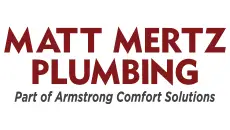Furnace Repair

Furnace repair involves a meticulous process aimed at restoring the functionality of a heating system, ensuring it operates efficiently and safely. It encompasses various steps and considerations, starting from first diagnostics to the final adjustments.
Diagnosis
- First, diagnosing the issue is crucial. A malfunctioning furnace can stem from multiple sources: electrical problems, faulty components, or mechanical issues. A technician often begins by inspecting the thermostat to ensure that it’s signaling the furnace correctly. They might also check for clogged filters, as dirty filters can impede airflow and strain the system.
- Electrical components, including wiring and circuitry, are inspected for any signs of wear, damage, or loose connections. This step requires meticulous attention to detail as any electrical faults pose significant safety risks.
- Mechanical components like the blower motor, fan, or burner assembly are then examined. Wear and tear, accumulation of debris, or mechanical failures in these parts can lead to inefficiencies or complete breakdowns. Cleaning or replacing these parts may be necessary to restore proper functionality.
Gas furnaces - the technician pays attention to the burner assembly and gas supply. Gas leaks are a severe hazard, so they must ensure proper combustion and exhaust. They'll check for blockages or irregularities in the gas supply and examine the burner for cleanliness and proper ignition.
Oil furnaces - inspection involves checking the oil filter, nozzle, and fuel supply lines. Cleanliness and proper functioning of these components are vital for efficient operation. The technician might clean or replace the oil filter and adjust the burner for optimal performance.
Repair
- Once the issue is identified, repairs commence. This might involve replacing damaged components, tightening loose connections, lubricating moving parts, or recalibrating settings. A skilled technician is equipped to handle a wide array of repairs, from simple fixes like replacing a faulty thermostat to more complex tasks like replacing a motor or repairing the heat exchanger.
- Safety is paramount throughout the repair process. Technicians are trained to adhere to safety protocols, especially when dealing with gas or oil furnaces. They use specialized tools and equipment and follow industry best practices to prevent accidents and ensure customer safety.
Testing
- After repairs are completed, the technician conducts tests to verify the effectiveness of the fixes. They'll check the system's performance, measure temperature differentials, and ensure proper airflow. This testing phase helps confirm that the furnace is functioning optimally and efficiently.
- Technicians also provide recommendations for ongoing maintenance to prevent future issues. This includes regular filter changes, system cleanings, and scheduled inspections to catch potential problems before they escalate.
In conclusion, furnace repair involves a comprehensive process that encompasses diagnostics, repairs, safety measures, and post-repair testing. It demands expertise, precision, and a thorough understanding of heating systems. A successful repair not only resolves the immediate issue but also ensures the furnace operates reliably and safely, providing warmth and comfort to homes and businesses.

